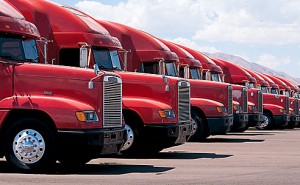Today President Obama announced the first-ever fuel economy standards for trucks and buses in the United States.
The standards were developed by the collective efforts of the U.S. Department of Transportation (DOT), the Environmental Protection Agency (EPA), and the companies that would be affected.
The President noted the unique circumstances of this historic event, in which the companies themselves were the ones demanding the fuel standards.
“While we were working to improve the efficiency of cars and light-duty trucks, something interesting happened,” says President Obama. “We started getting letters asking that we do the same for medium and heavy-duty trucks. They were from the people who build, buy, and drive these trucks. And today, I’m proud to have the support of these companies as we announce the first-ever national policy to increase fuel efficiency and decrease greenhouse gas pollution from medium-and heavy-duty trucks.”
The standards will apply to all heavy-duty vehicles manufactured between 2014 and 2018. This includes commercial trucks, buses, heavy-duty pickup trucks and vans, and vocational vehicles like delivery and garbage trucks. The standards program employs specific targets for each type of vehicle instead of using a one-size-fits-all approach.
The demand was partially due to the new fuel economy standards for cars and light trucks, which were announced by the Obama Administration several weeks ago.
Outline of the Standards:
- Commercial trucks have to increase fuel economy 20% beginning in 2014
- Heavy duty pickup trucks and vans have to increase fuel economy 15% by 2018
- Vocational vehicles like garbage trucks, buses and fire engines have to increase fuel economy 10% by 2018.
These changes will help to reduce the carbon footprint of America’s gas-guzzling vehicles, which collectively consume over 100 million gallons per day and account for 20% of transportation-related carbon emissions. The Administration estimates oil consumption will be reduced by 22 billion gallons between the years of 2014 and 2018. This will prevent 270 million metric tons of carbon emissions and resulting in $50 billion in fuel savings.
The new standards also have the potential to create thousands of jobs across the supply chain, as U.S. manufacturers will become more competitive with exporting fuel efficient trucks and buses.
To learn more, check out the full report by the Environmental Defense Fund:







